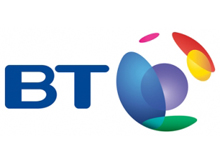BT expects to shave £13 million a year off its energy bills, and reduce its carbon footprint by five per cent, by introducing smart meters and a smart energy management and control system across thousands of its offices, telephone exchanges and data centres.
The company is currently installing more than 22,000 smart energy meters and over 1,500 building energy management systems, as well as an advanced control network over broadband, to monitor and control energy consumption and ensure that systems like heating, ventilation and air conditioning are optimally configured and functioning efficiently.
The program, which is being rolled out to more than 110 buildings a month, brings together a unique combination of smart meters, machine to machine communications, forecasting and reporting functions overlaid by a software tool for driving accurate billing and driving out waste energy consumption.
The meters wirelessly monitor energy consumption and environmental conditions across BT’s key buildings and telephone exchange sites, providing real time reporting data to an integrated energy management system. The central software-based system will record energy usage information from a variety of sources, including smart meters, invoices and building energy management and control systems, enabling multiple stages of data analysis to ensure energy efficiency across the company’s sites.
The program is expected to reduce BT’s energy costs by £13 million per year and its carbon footprint by 60,000 tonnes per year – equivalent to the annual emissions from electricity supplied to 23,000 houses.
The integrated energy management system – which will cover more than 90 per cent of BT’s U.K. energy consumption – will also allow the company to identify anomalies in energy usage across its buildings and spot issues, such as ineffective use of cooling and heating. It also allows the company to remotely manage power and infrastructure devices supporting its telecom and IT services. By benchmarking for example, the power usage effectiveness (PUE) across buildings, the company’s Energy and Carbon Unit can identify the best and worst performing locations and implement actions to remedy energy wastage and inefficiencies.
“Having real time energy usage information for thousands of buildings at our finger tips will really help us drive down BT’s carbon footprint and energy bills,” said Richard Tarboton, director of Energy and Carbon at BT. “Thousands of smart meters placed at BT offices, telephone exchanges and data centers will help us monitor energy usage levels and identify areas where we can deliver savings and make buildings more efficient.”
BT also plans to start rolling out similar smart energy management systems globally in 2012.
Source: metering.com










